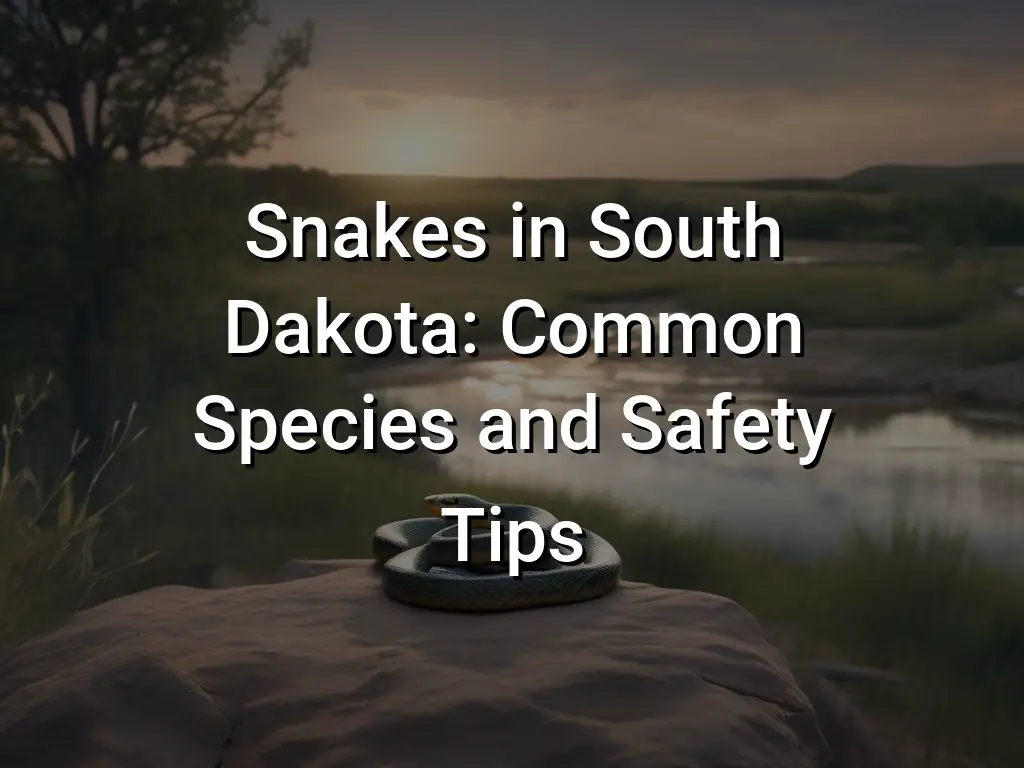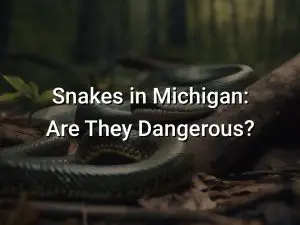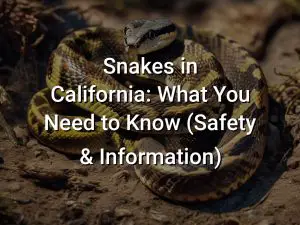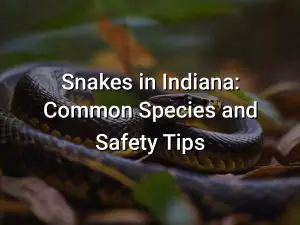Snakes in South Dakota: Common Species and Safety Tips

Whether you’re a resident or a visitor to South Dakota, it’s important to be aware of the snakes that call this state home. South Dakota is home to several species of snakes, each with its own unique characteristics. In this article, we’ll explore the common snakes found in South Dakota and provide some safety tips for dealing with them.
From the prairies to the Black Hills, South Dakota’s diverse landscape provides habitat for a variety of snake species. By understanding their behavior and habitat preferences, you can better navigate encounters with these fascinating creatures. So let’s dive in and learn more about the snakes of South Dakota!
Quick Links
Common Snakes Found in South Dakota
South Dakota is home to a variety of snake species, some of which are venomous and others that are harmless. It’s important to familiarize yourself with these common snakes to ensure your safety when encountering them in the wild.
1. Prairie Rattlesnake (Crotalus viridis): The Prairie Rattlesnake is the only venomous snake found in South Dakota. It has a distinctive rattle on its tail and can be found in grasslands, prairies, and rocky areas. If you encounter a Prairie Rattlesnake, give it a wide berth and do not attempt to handle or disturb it.
2. Western Hognose Snake (Heterodon nasicus): The Western Hognose Snake is a harmless snake that is known for its upturned snout and defensive behavior. When threatened, it may flatten its body, hiss, and even play dead. It can be found in grasslands, sand hills, and prairies.
3. Bullsnake (Pituophis catenifer): The Bullsnake is a non-venomous snake that is often mistaken for a rattlesnake due to its similar appearance and defensive behavior. It is a skilled climber and can be found in a variety of habitats, including grasslands and agricultural areas.
4. Red-sided Garter Snake (Thamnophis sirtalis parietalis): The Red-sided Garter Snake is a common snake in South Dakota. It has a bright red stripe running down each side of its body and can be found near wetlands, lakes, and rivers. It is harmless and plays an important role in controlling rodent populations.
5. Western Ribbon Snake (Thamnophis proximus): The Western Ribbon Snake is a slender and fast-moving snake that is found near water sources such as streams, rivers, and marshes. It is harmless and feeds on small fish, frogs, and insects.
6. Smooth Greensnake (Opheodrys vernalis): The Smooth Greensnake is a small and slender snake that is bright green in color. It can be found in grasslands, meadows, and open woodlands. It is harmless and feeds on insects and spiders.
Remember, when encountering snakes in South Dakota, it is always best to give them their space and observe them from a safe distance. If you are unsure about the species of snake you have encountered, it is recommended to contact local wildlife authorities for assistance.
Safety Tips for Dealing with Snakes
Encountering snakes can be a nerve-wracking experience, but by following these safety tips, you can reduce the risk of snake bites and stay safe:
- Stay alert and watch your surroundings when you are in snake-prone areas, such as tall grass, rocky areas, and dense forests.
- Stick to well-worn paths and avoid stepping into areas where you can’t see the ground clearly.
- Wear protective clothing, such as long pants and boots, to reduce the risk of snake bites.
- Avoid reaching into dark and hidden areas, such as rock crevices or fallen logs, where snakes might be hiding.
- If you encounter a snake, give it space and do not provoke or try to handle it.
- Do not attempt to kill or harm the snake, as this increases the chances of getting bitten.
- If you spot a snake and need to move past it, take a wide detour to give it a wide berth.
- If you are camping, keep your tent zipped up at all times to prevent snakes from entering.
- Teach children to stay away from snakes and to notify an adult if they spot one.
- If you or someone else gets bitten by a snake, seek medical help immediately. Do not attempt to suck out the venom or use other home remedies.
Remember, most snakes are not venomous and will only bite if they feel threatened. By staying alert and following these safety tips, you can enjoy the outdoors while minimizing the chances of snake encounters and bites.
Conclusion
Snakes are a common sight in South Dakota, and it’s important to be aware of the different species and how to safely interact with them. By familiarizing yourself with the common snakes found in the area and following some basic safety tips, you can coexist with these fascinating creatures and enjoy the great outdoors without fear.
Remember, snakes are an important part of the ecosystem and play a vital role in controlling rodent populations. If you encounter a snake, it’s best to give it space and let it go about its business. If you have concerns about a snake on your property or need assistance in identifying a snake, it’s always best to contact a professional wildlife expert for guidance. Stay safe and happy exploring!






